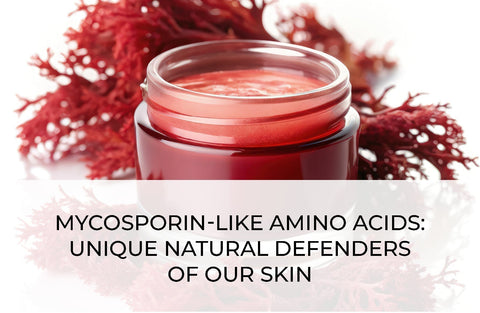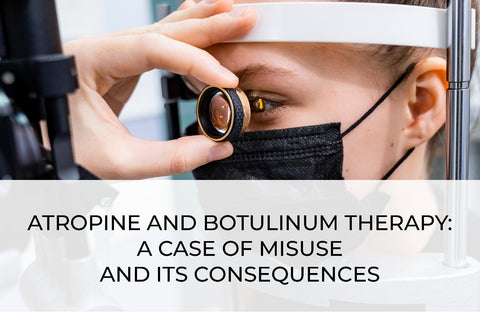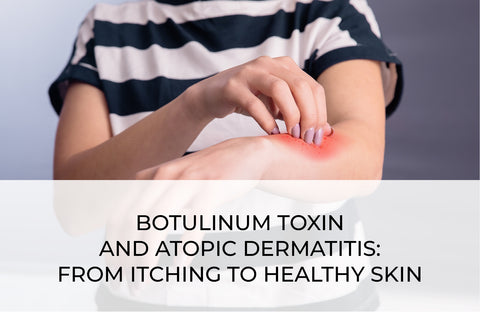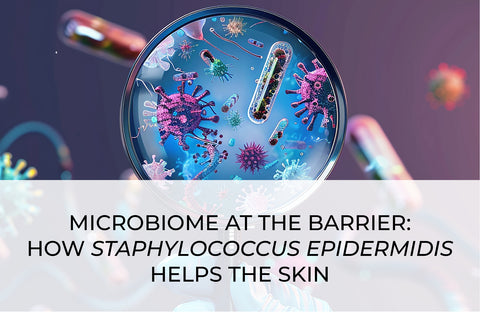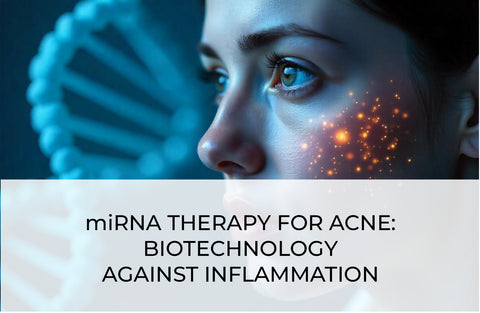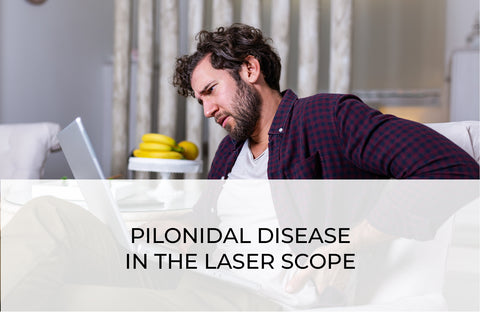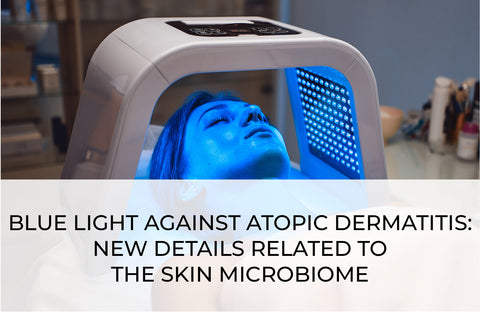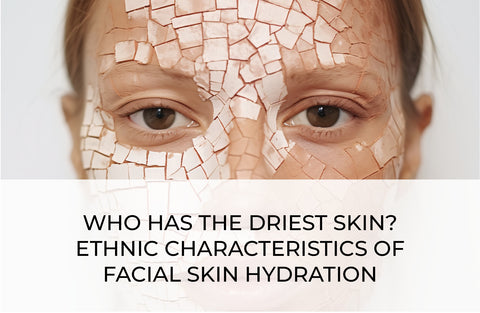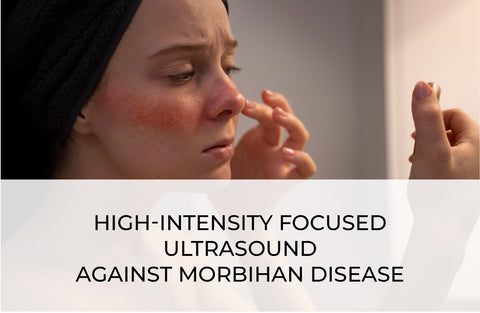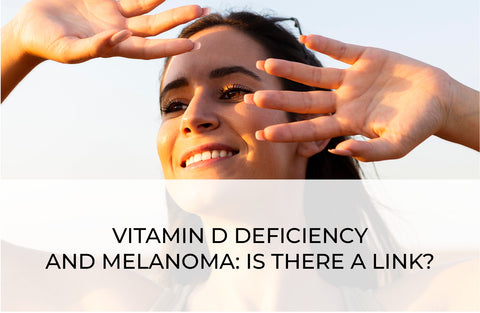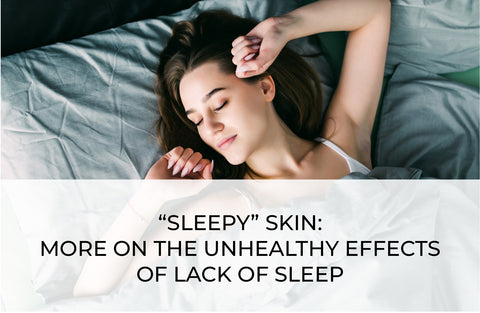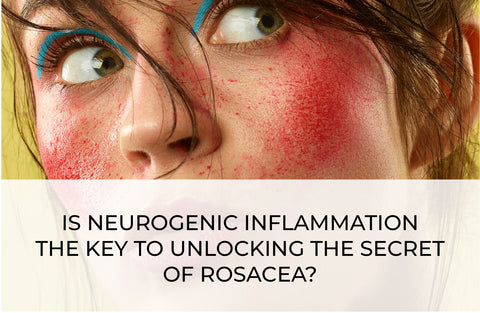HIGH-INTENSITY FOCUSED ULTRASOUND AGAINST MORBIHAN DISEASE

Morbihan disease is a rare chronic disease with a progressive course, manifested by swelling of the middle third of the face and persistent erythema. Oral medications (isotretinoin, thalidomide, clofazimine, ketotifen, etc.) and surgery are used for treatment, either alone or in combination with each other. Unfortunately, it does not have much success with such therapy [1].
One of the possible mechanisms of Morbihan disease development is considered to be obstruction of lymphatic vessels, so the improvement of lymphatic drainage seems to be an effective additional therapy, which was confirmed in patients with lymphedema after mastectomy due to breast cancer [2–4]. The problem is that lymphatic vessels are located deep, and it is difficult to reach them without damaging the overlying layers. Phototherapy and electrotherapy have little effect here. However, focused ultrasound can cause controlled local heating to about 40–42°C at the desired depth, triggering tissue remodeling processes. The authors of the article published in the July issue of Clinical, Cosmetic and Investigational Dermatology journal made just such an assumption and realized it in their clinical practice [5].
A 56-year-old female patient was admitted with complaints of facial erythema and edema, as well as hyperalgesia, which she had been suffering from for 10 years. She was initially diagnosed with rosacea and was treated intermittently with hydroxychloroquine and minocycline. The facial erythema improved somewhat, but the cheek swelling and hyperalgesia did not. Oral antidepressants, such as a fixed-dose melitracen/flupentixol combination drug, were also used for about 6 months, but there was no improvement. Exposure to hot and cold weather, sunlight, and cosmetics increased the discomfort.
Based on history, complaints, examination, and skin biopsy, the patient was diagnosed with Morbihan disease. The patient refused further oral medications, including isotretinoin, due to possible side effects and personal reasons. Therefore, all systemic medications were discontinued and a trial treatment using micro- and macrofocused high-intensity ultrasound was initiated.
Exposure using the MF-HIFU applicator (4 MHz, focus depth 3 mm, intensity 3.76 W) was performed for 5 minutes on both cheeks. Hydrogel was applied evenly on both sides of the cheeks with a thickness of 2 mm, the applicator was continuously moved smoothly over the cheek to avoid overheating. All parts of the face were treated except for the periorbital area. A total of 3 treatments were performed with an interval of 4 weeks. Then the treatment was discontinued due to improvement of clinical manifestations without recurrences. At the 6th month of follow-up, there was a clear reduction in edema, decreased erythema, and hyperalgesia.
This clinical case is so far the only one reported in the literature. However, it gives hope that patients with Morbihan disease can receive effective help and block the progression of the pathologic process. Rosacea patients already have such help in the form of laser therapy. Perhaps in the case of Morbihan disease, MF-HIFU will become such a method.
References
- Kutlay S., Ozdemir E.C., Pala Z., et al. Complete decongestive therapy is an option for the treatment of rosacea lymphedema (Morbihan Disease): two Phys Ther. 2019; 99(4): 406–410.
- Mayur O., Martinez R., McNichol M.C., et al. Clinical and histological features and treatment outcomes of patients with Morbihan disease: a systematic review. Arch Dermatol Res. 2023; 315(8): 2427–2429.
- Johannessen A.L., Alstrup M., Hjortdal V.E., et al. Lymphatic function decreases over time in the arms of breast cancer patients following treatment. Plast Reconstr Surg Glob Open. 2022; 10(9): e4507.
- Nagasaka T., Koyama T., Matsumura K., et al. Persistent lymphoedema in Morbihan disease: formation of perilymphatic epithelioid cell granulomas as a possible pathogenesis. Clin Exp Dermatol. 2008; 33(6): 764–767.
- Li M., Tao M., Zhang Y., et al. Effect of High-Intensity Macro-Focused Ultrasound on a Case of Morbihan Disease. Clin Cosmet Investig Dermatol. 2023; 16: 1949–1954.



